Advertisement
Living in a loft and designing it to be your sweet getaway is one-of-a-kind experience. Loft decorating ideas encompass unexpectedly tall and dramatic windowing, open floors, and a beautiful light flow to keep the place fresh during the day and to throw a look on the amazing nightlights of your city.
This being said, loft design ideas make for the most modern and industrial ones, and it is not rare to meet ductwork, concrete, and exposed pipes in any of these homes.
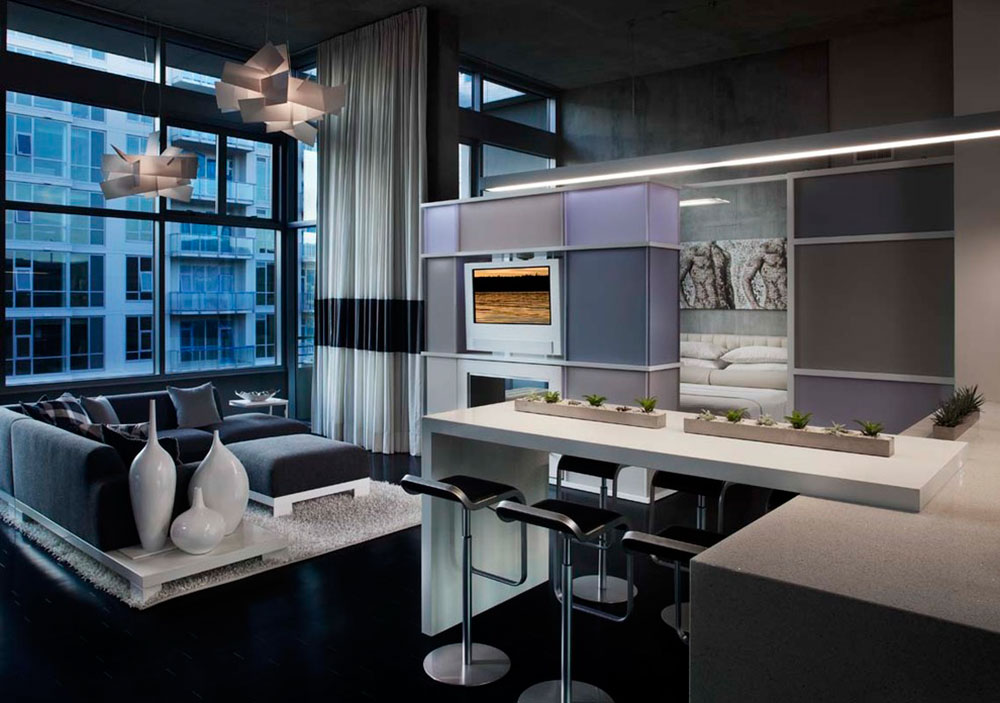 Image source: Chipper Hatter Architectural Photographer
Image source: Chipper Hatter Architectural Photographer
The original idea of living in a loft belongs to artists, who preferred to be slightly isolated and do their work inspired by the magnificent views lofts have to offer.
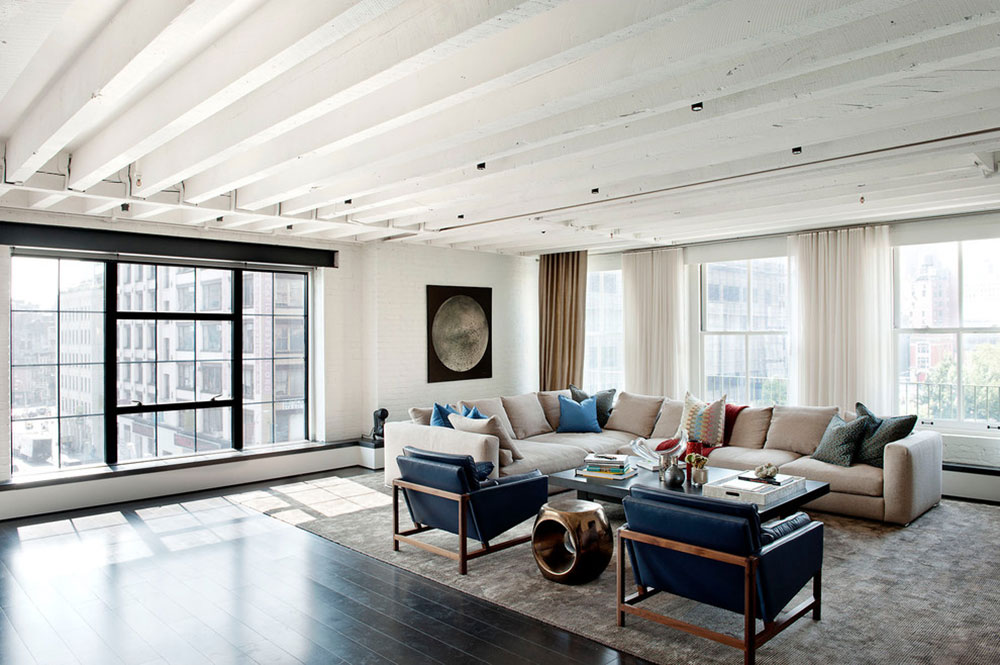 Image source: David Howell Design
Image source: David Howell Design
Afterwards, it appeared that such lifestyle fit even people who had nothing to do with art, but simply didn’t want to bother with divided walls and overwhelming decoration.
As we said, lofts are all-rooms-in-one solutions, and therefore apply to every person looking to embrace calmness and simplicity.
Here are few useful tips for designing a loft.
Before everything else
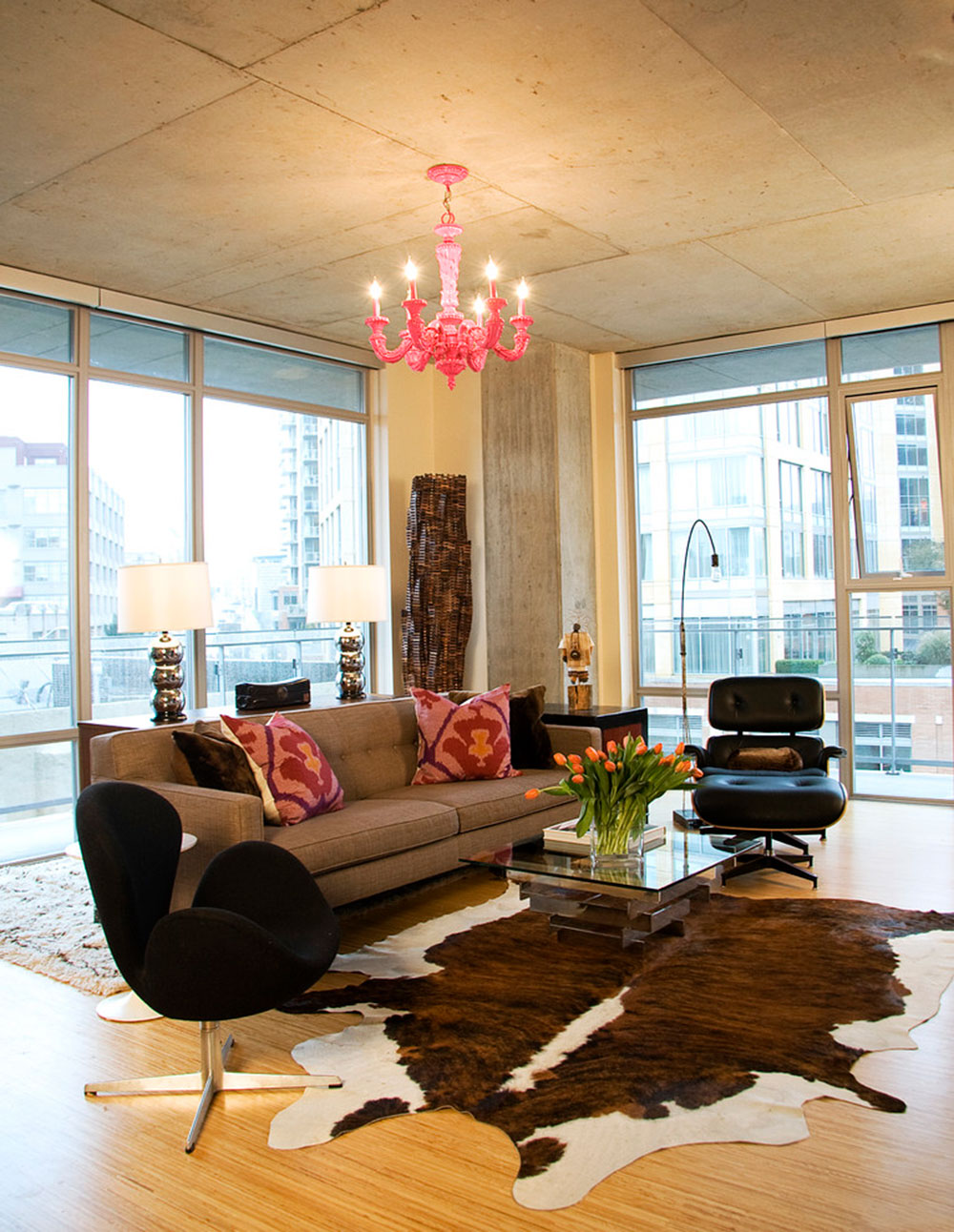 Image source: Tewes Design
Image source: Tewes Design
The initial task before jumping on your loft’s decoration is to get rid of what you’ve been told about it, and forget about all preconceived decorating notions.
When designing your loft, think of it as your masterpiece: bring up all the arty ideas you’ve got, mix and test colors to find the right combination, and think of how the overall theme should look in the end.
The ‘less is more’ principle that is so widely embraced in every sphere of interior design doesn’t have to apply to the loft too: as long as you keep clutter low and functionality in the first place, you are allowed to bring inside whatever you want.
The second thing to do in order to prepare for a loft home is to think of the most practical storage solutions – lofts are usually not divided in few separate areas, and everything you own will be displayed to the attention of your visitors.
Choose a style
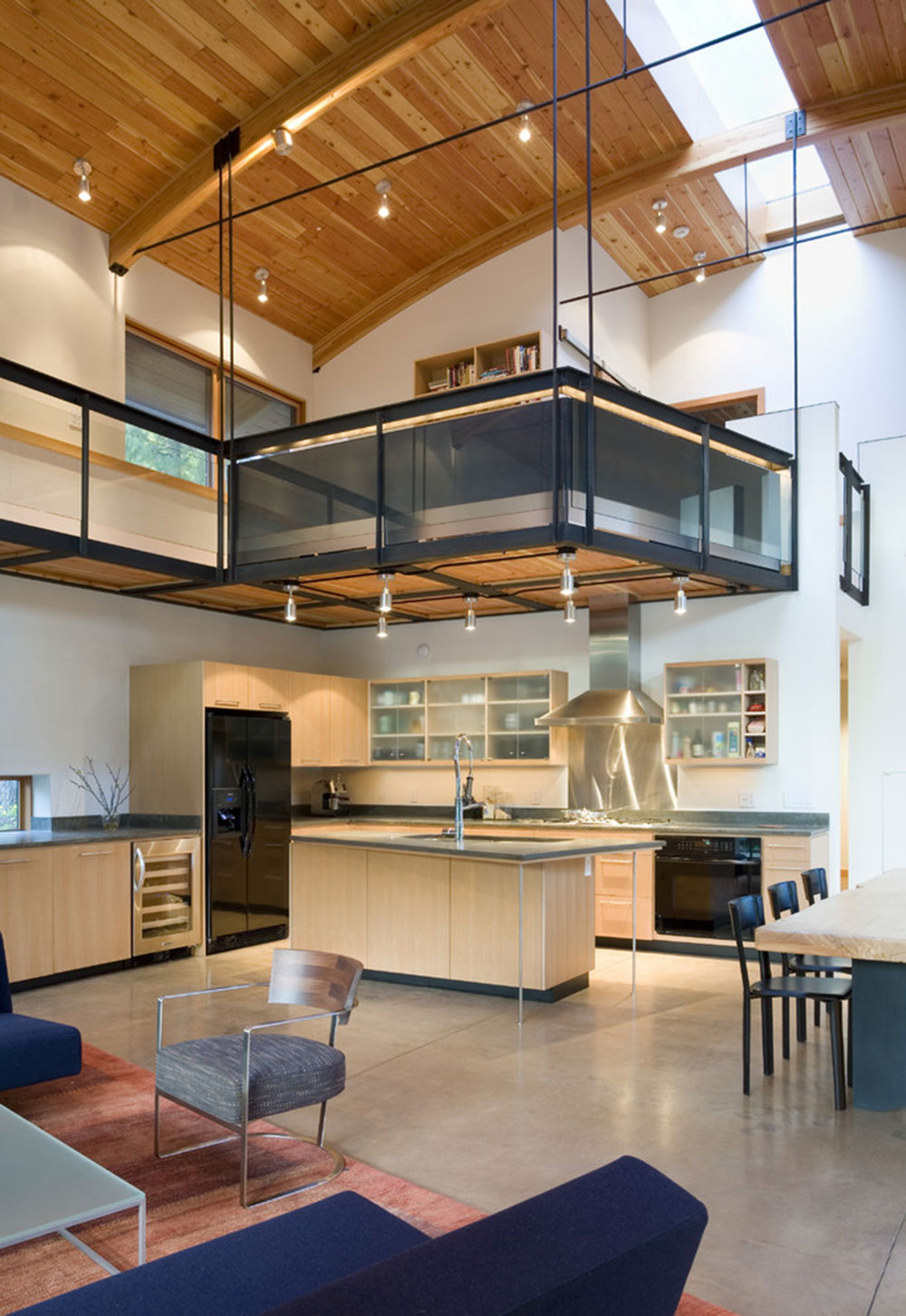 Image source: Prentiss Balance Wickline Architects
Image source: Prentiss Balance Wickline Architects
More often than rare, lofts are designed in a contemporary way, and favor clear, sleek lines, neutral colors, and smooth surfaces.
Materials are usually natural, and include stone, wood, chic metal and manmade glasswork, even if many creative people prefer to make them warmer with plants and rich, traditional fabrics.
Storage
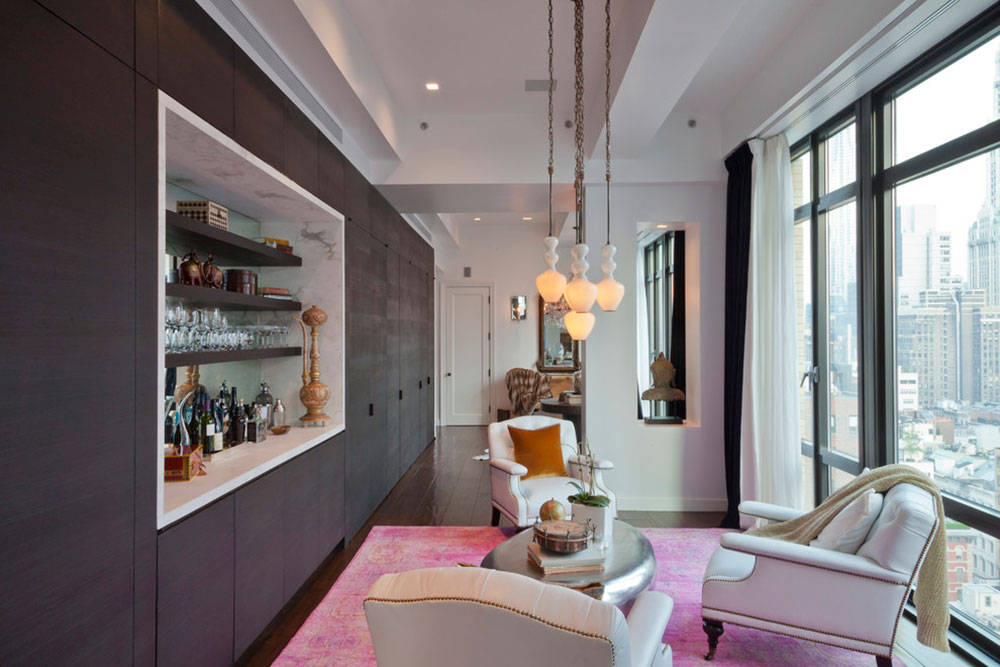 Image source: CCS ARCHITECTURE
Image source: CCS ARCHITECTURE
Loft dwellers usually complain about the lack of storage space, as large and open spaces don’t leave that many possibilities to stack linens, hang up clothes, or store personal belongings.
What needs to be done in the case is to learn from our forefathers: there weren’t any closets in the past, and people had to compensate for it with storage-enabled furniture, such as wardrobes, buffets, platform beds, or the typical china cabinets.
What is also good about it is that they don’t cost too much, even if we try to build our own storage space in a creative way, with a couple of square storage blocks displayed in an interesting way.
People go as far as turning storage in a focal point, namely using centrally-positioned fireplace mantels, shelves and bins casually covered with fabric skirts, or even wall murals with few shelves inside.
Combining colors
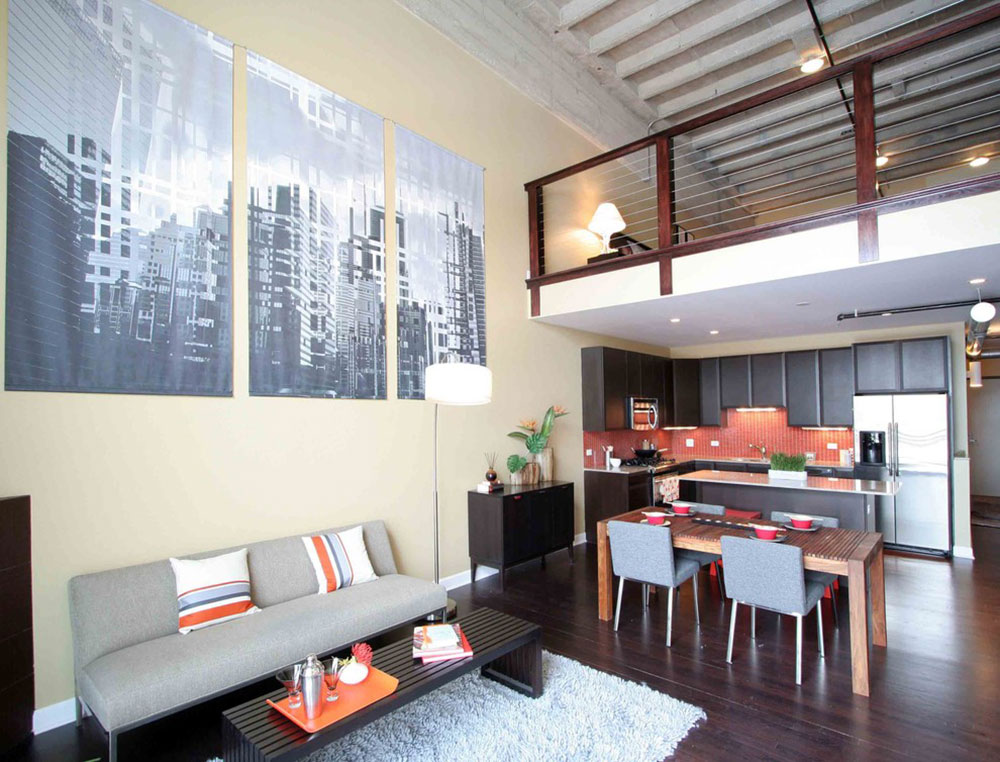 Image source: Habitar Design
Image source: Habitar Design
Preferred loft schemes are neutral, and include a lot of white and beige surfaces, and that’s because the space is open and needs to please the eye with a single color palette, and to accentuate the unity of the place.
Still, don’t be afraid to break the monotony with color, and add bold splashes to offset the clam hues wherever you think that’s necessary.
Painting effects are just indispensible for adding interest, so consider even painting an entire wall, or adding stripes on it to alternate the gloss.
The ceiling problem
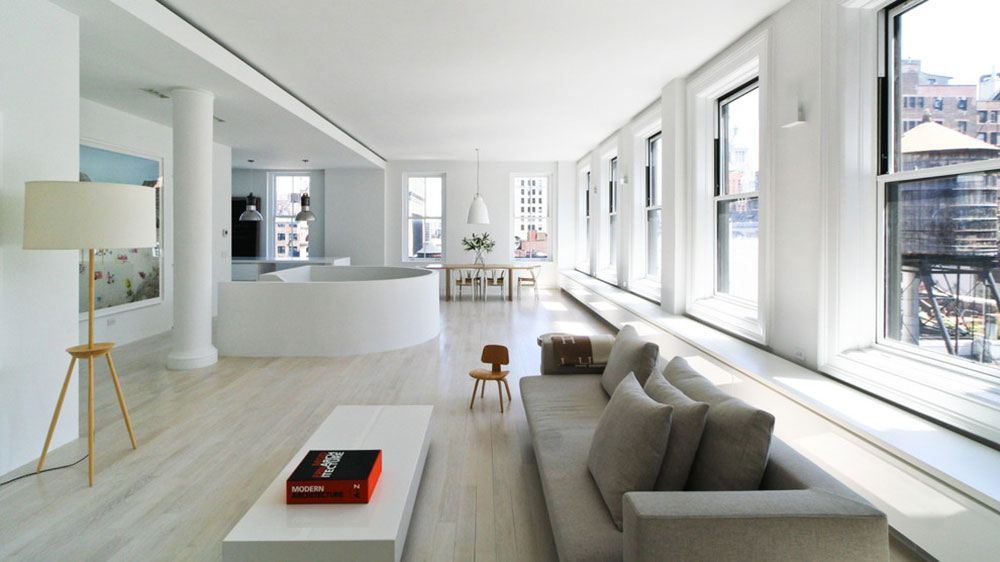 Image source: Resolution: 4 Architecture
Image source: Resolution: 4 Architecture
Lofts usually have high ceilings, and feature exposed beams and similar ductwork. In case you don’t find this solution eye pleasant, camouflage it with darker decorations. Sometimes, all it will take to make it visually lower is to paint the beams.
The creative ones among you can even consider bringing some new architectural elements, as for instance molding to make the ceiling appear lower. Other similar tactics include hanging large vertical paintings, or purchasing furniture taller than usual, as for instance armoires and bookcases.
Wooden floors
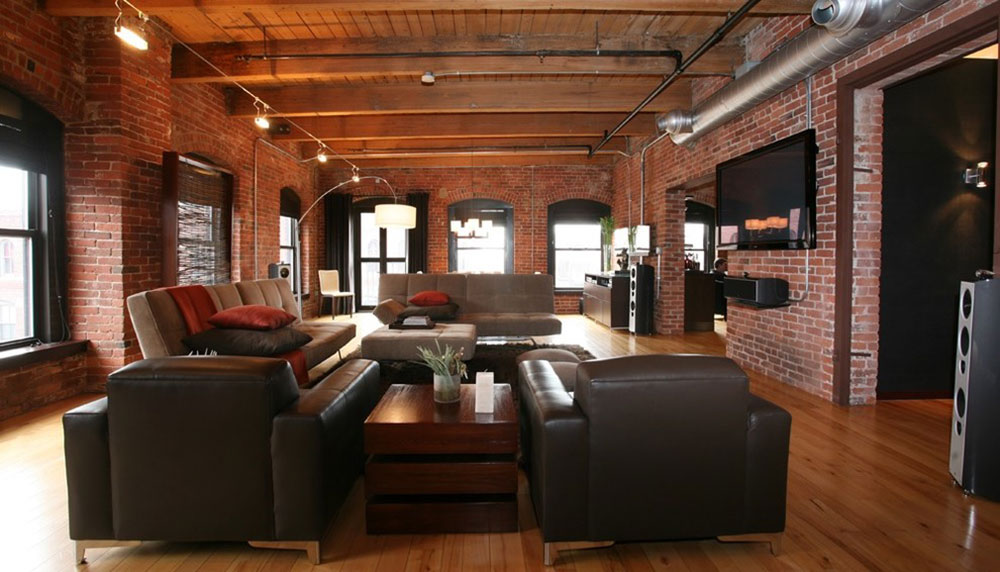 Image source: Nicole Hogarty
Image source: Nicole Hogarty
We’ve long surpassed the carpet trend, where we used to cover all floors wall-to-wall with disturbing and difficult-to-maintain carpets.
The preferred solution nowadays is to elongate our rooms with wooden floors, which is why some of us think wood is not a smart loft solution.
Still, why diminishing the spaciousness impression? Most of us decide for loft homes right because they’re big, and instead of trying to wrap them up, we should let our imagination loose and try to make the most of the space we’ve got.
For instance, you can try using a beautiful and sustainable maple floor, and stain it in warm ebony tones or blur and grey hues.
Scale
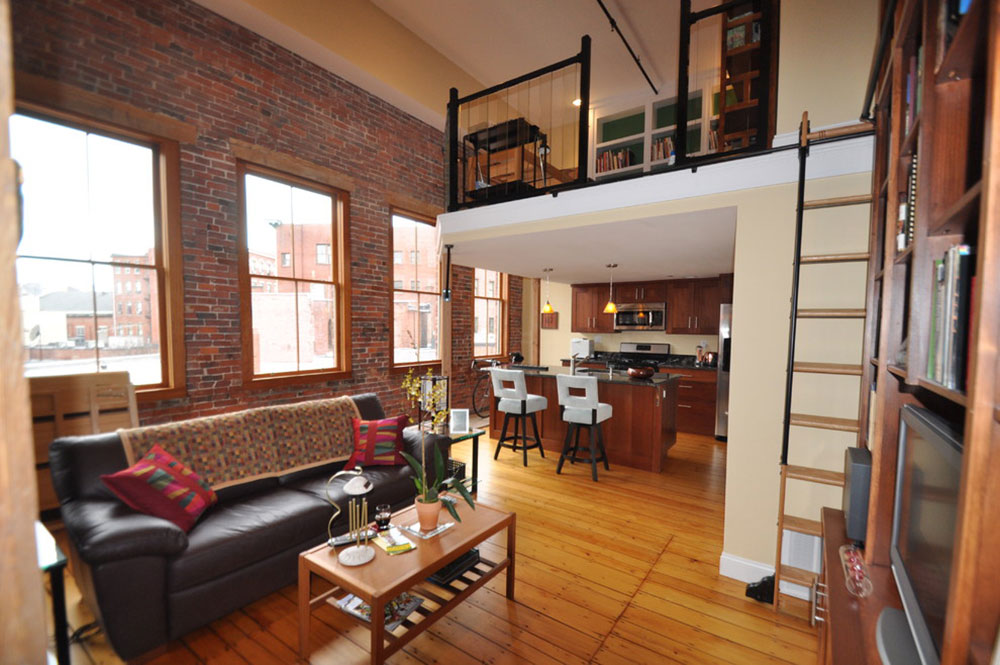 Image source: Design 1 Kitchen & Bath
Image source: Design 1 Kitchen & Bath
Let’s be honest about it: When designing a loft, all we have is a raw and enormous room, where ceilings are disproportionally high, and there is nothing to indicate a division or to simplify the process of bringing this place together, and converting it in a home.
Therefore, our initial task is to rescale the place, and make sure our furniture is not lost in the emptiness without a function.
The best way to go is to choose larger furniture pieces with impactful colors that will contrast our endless, neutral walls, or to rethink about lighting and illuminate areas separately rather than hanging central, pendant fixtures.
Remember: as beautiful as it is, your luxurious chandelier won’t impress anyone hanging ten feet from their heads – you need to bring all pendant lights down to a human level.
Mirrors
If you want your loft to appear larger than it is, try using mirrors.
They won’t cost too much, as you’ll only have to purchase one or two (ideally simple and without frames that could distract the simple, industrial scheme), and place them strategically in places where they can reflect most of the sunlight coming inside your room.
For lofts that lack natural sunlight, you can use mirrors opposite your windows to reflect sunlight, and to add brightness to your place right away.
Decentralized lighting
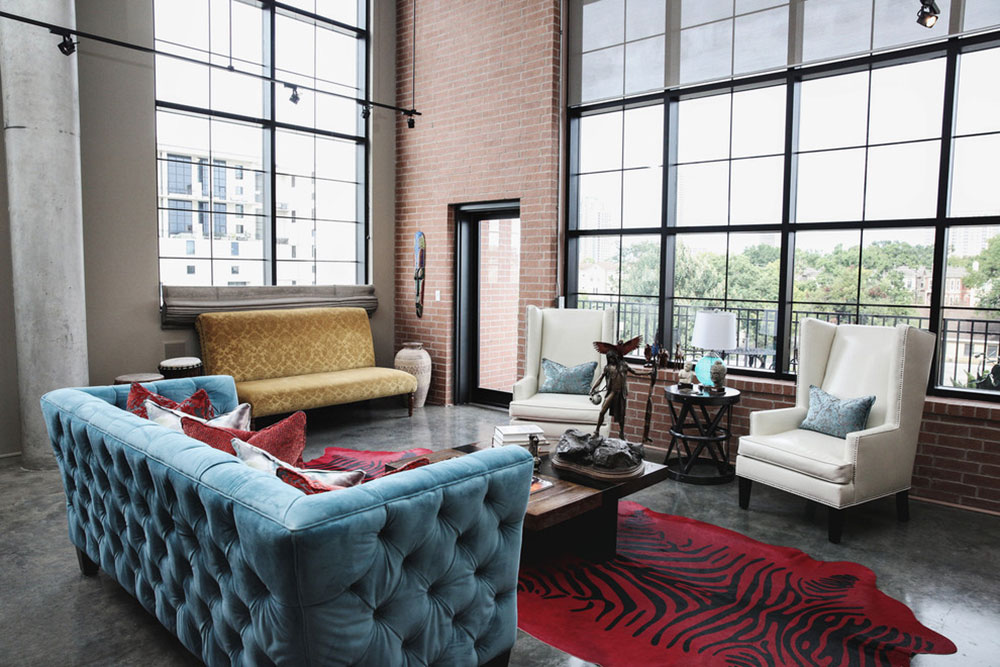 Image source: Estrada Design Consulting
Image source: Estrada Design Consulting
Lofts are entirely open and considerably large, which is why integral lights and smack dabs hung in the middle of our rooms don’t exactly help underline the way we’ve based and arranged out furniture elements.
Instead, we should consider the furniture’s proximity to light, and define more than one pending light area for each part. Having applied the open-floor concept, we must be able to envision division even without walls, as for instance eating, seating, or sleeping sections, and light is a great mean to achieve that.
Vintage posters and ads
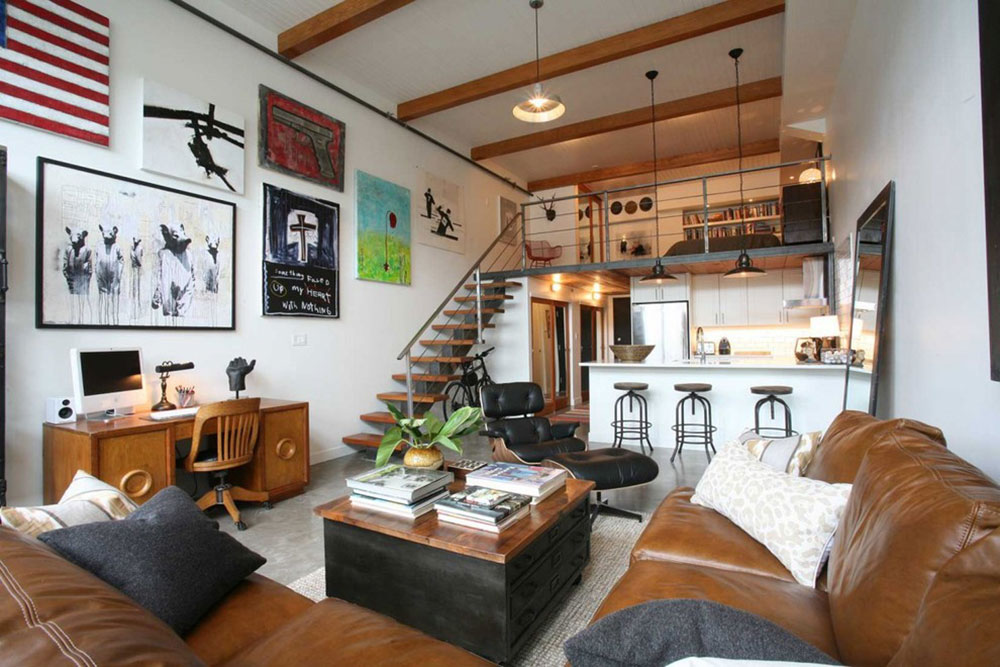 Image source: Antique Market
Image source: Antique Market
Why not making a retro loft? Collect few beautiful vintage ads and hang them on the walls for your visitors to enjoy.
Most ads and posters like this can be purchased in antique stores and shops, but you can also consider using retro magazines or downloading Lucky Strike ad replicas from the internet.
Print them out, frame them, and spice up the place with some old-school creativity.
Windowing
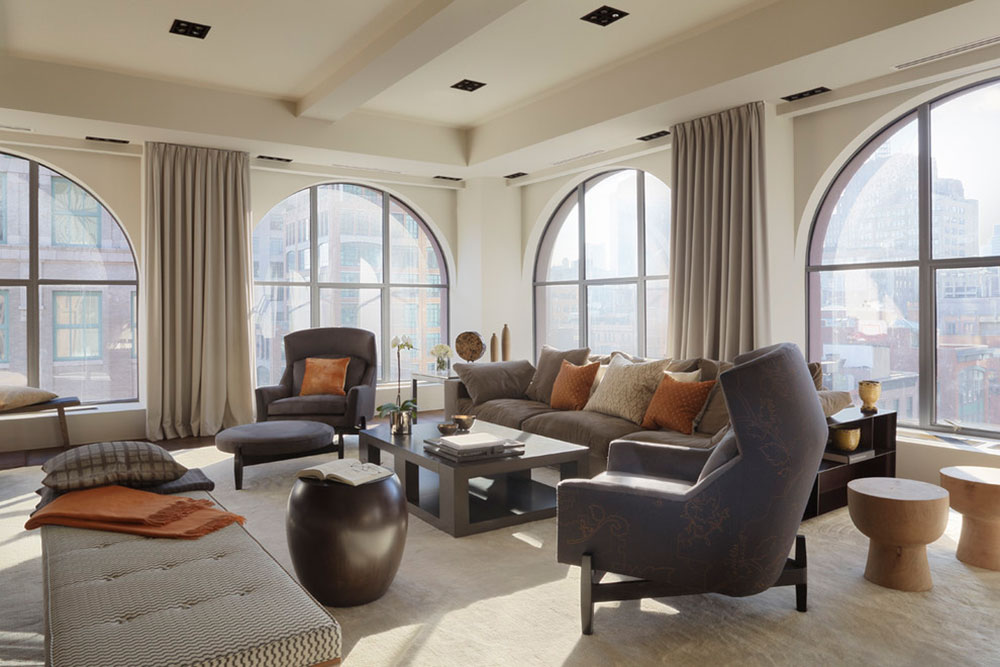 Image source: PURVI PADIA DESIGN
Image source: PURVI PADIA DESIGN
Lofts are usually accompanied by marvelous views, but the problem with their large windows is that they don’t really protect your privacy, and can expose your place to weather extremes unless you cover them properly.
You can use sheer and translucent fabric panels to obtain both the privacy and the amount of natural light every room needs.
Another suggestion to think of are shutters and blinds, because you can open those to let morning light come inside, and close them later on to keep your loft out of peoples’ sight during the afternoons.
Working lofts
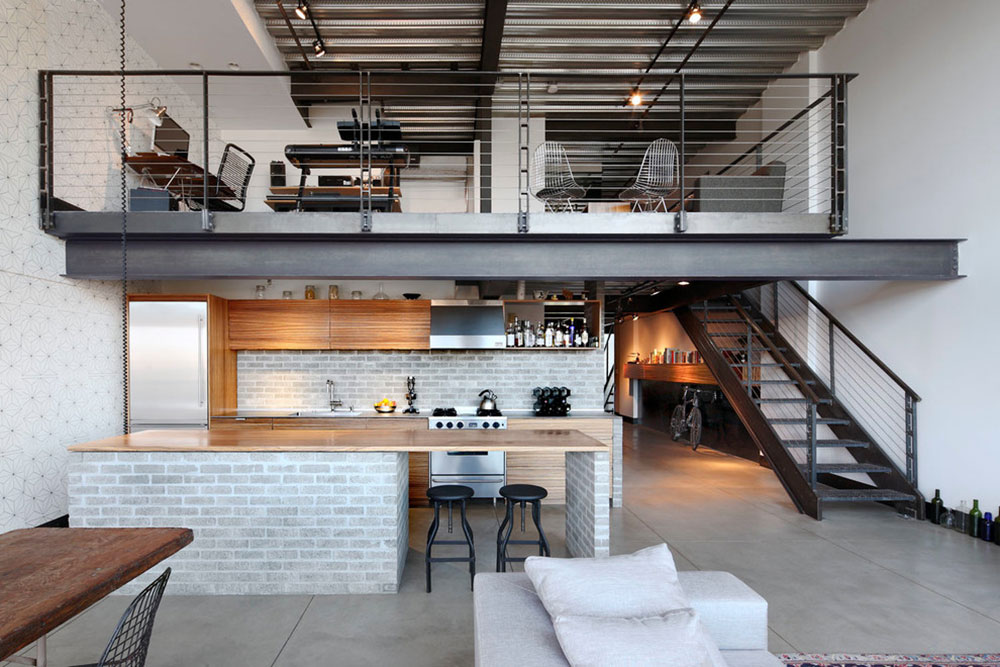 Image source: SHED Architecture & Design
Image source: SHED Architecture & Design
Many people would never think of living in a loft because they perceive it is as a New York-style artists’ atelier, which may be a quiet getaway, but it doesn’t have the conditions necessary to live in it.
The truth, however, is that you can use for loft for both purposes: choose and dedicate a working section (depending on the nature of your job, try to choose an area located close to the window).
Cozy loft have perfected the skill of nurturing creativity, and living in them is often that one and only incentive we have to nourish our talent.
Personalize it
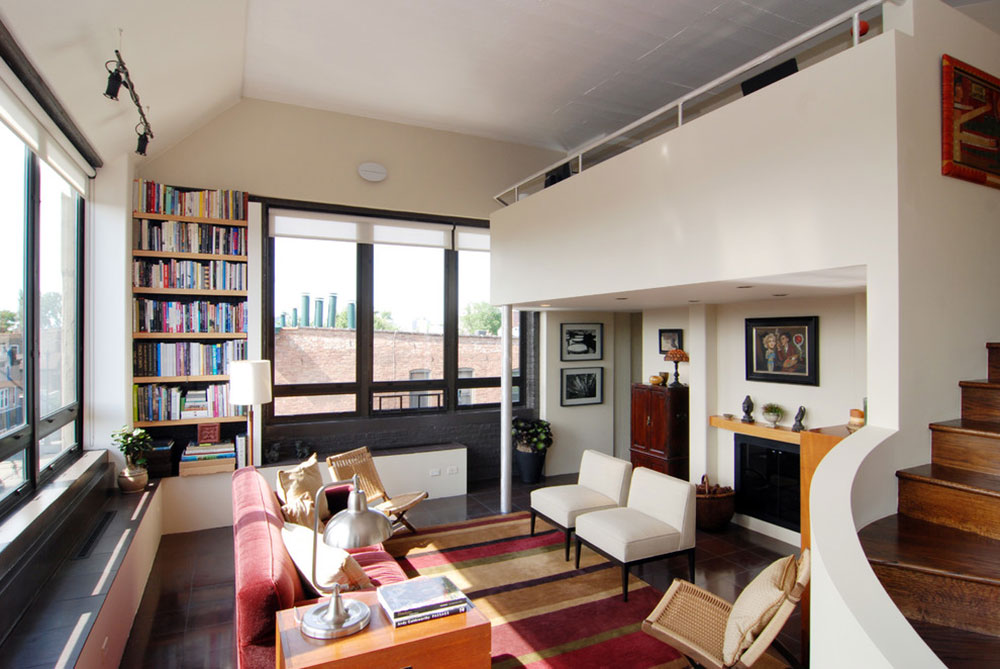 Image source: Tracy Schneider Design
Image source: Tracy Schneider Design
What you will enjoy the most when designing and furnishing your loft is the unlimited freedom you’re given to implement your creativity and unique ideas.
The first association of lofts everybody has is that they are raw and unfinished, and that’s exactly what lofts represent – large and open spaces where there are no rules, and possibilities are just endless!
Therefore, you’re completely allowed to mix your antiquities and traditional rugs with modern, stainless still appliances, to break the neutral schemes with bold, leather sofas, or even repurpose furniture in an unusual way – Whatever you think is nice, go ahead with it!
